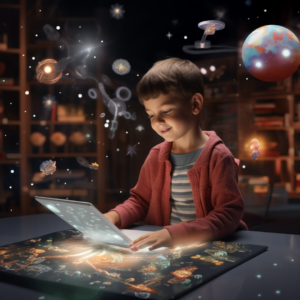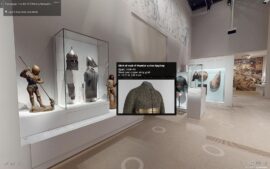10 Best Implementations of Augmented Reality in Education

Augmented reality (AR) is a powerful technology that overlays virtual objects onto the real world. It has the potential to transform education by creating interactive and engaging learning experiences. In this article, we will explore the 10 best implementations of AR in education.
- AR in Science Education
AR can be used in science education to create interactive experiences that bring abstract concepts to life. For example, students can use AR to explore the human body, planets, and the solar system. AR apps can be used to show the structure of atoms, molecules, and other complex scientific concepts.
- AR in Language Learning
Another good area to implement AR is language learning to create immersive environments that help students learn new languages. AR apps can be used to create virtual environments where students can practice their language skills in real-life situations. This can help students improve their language skills and gain confidence in speaking.
- AR in Art Education
AR can improve art education, creating interactive experiences that help students learn about different art styles, techniques, and movements. For example, students can use AR apps to explore famous paintings and sculptures, learn about art history, and create their own art projects.
- AR in History Education
Augmented reality in history education can be used to create immersive experiences that help students learn about different historical events and periods. For example, students can use AR apps to explore historical sites and artifacts, learn about different cultures and traditions, and participate in virtual field trips.
- AR in Geography Education
In geography education AR interactive experiences can help students learn about different places and cultures. For example, students can use AR apps to explore different parts of the world, learn about different cultures and traditions, and participate in virtual field trips.
- AR in Math Education
AR in math education can help students learn about different math concepts and solve problems. For example, students can use AR apps to visualize geometric shapes, solve math problems, and explore mathematical patterns and relationships.
- AR in Engineering Education
One of the best areas to implement AR is engineering education. Students can use it to create interactive experiences that help students learn about different engineering principles and techniques. For example, students can use AR apps to explore different types of structures, learn about the design process, and participate in virtual engineering projects.
- Augmented reality in Medical Education
AR in medical education will help students learn about different medical procedures and techniques. For example, students can use AR apps to simulate surgeries, explore the human body, and learn about different diseases and conditions.
- AR in Environmental Education
Students can use AR solutions in environmental education to learn about different environmental issues and solutions. For example, students can use AR apps to explore different ecosystems, learn about different types of pollution, and participate in virtual conservation projects.
- AR in Physical Education
AR solutions in Physical education can improve existing methods of teaching, brining interactive animated scenarios about different physical activities and techniques. For example, students can use AR apps to learn about different sports, practice different exercises, and participate in virtual fitness challenges.
Check our page about AR for education
Want to get AR for kid’s education?



